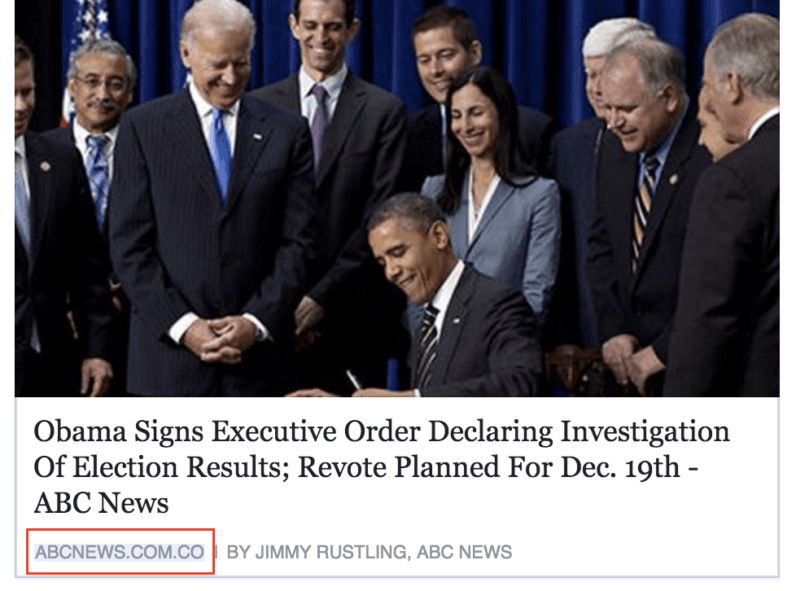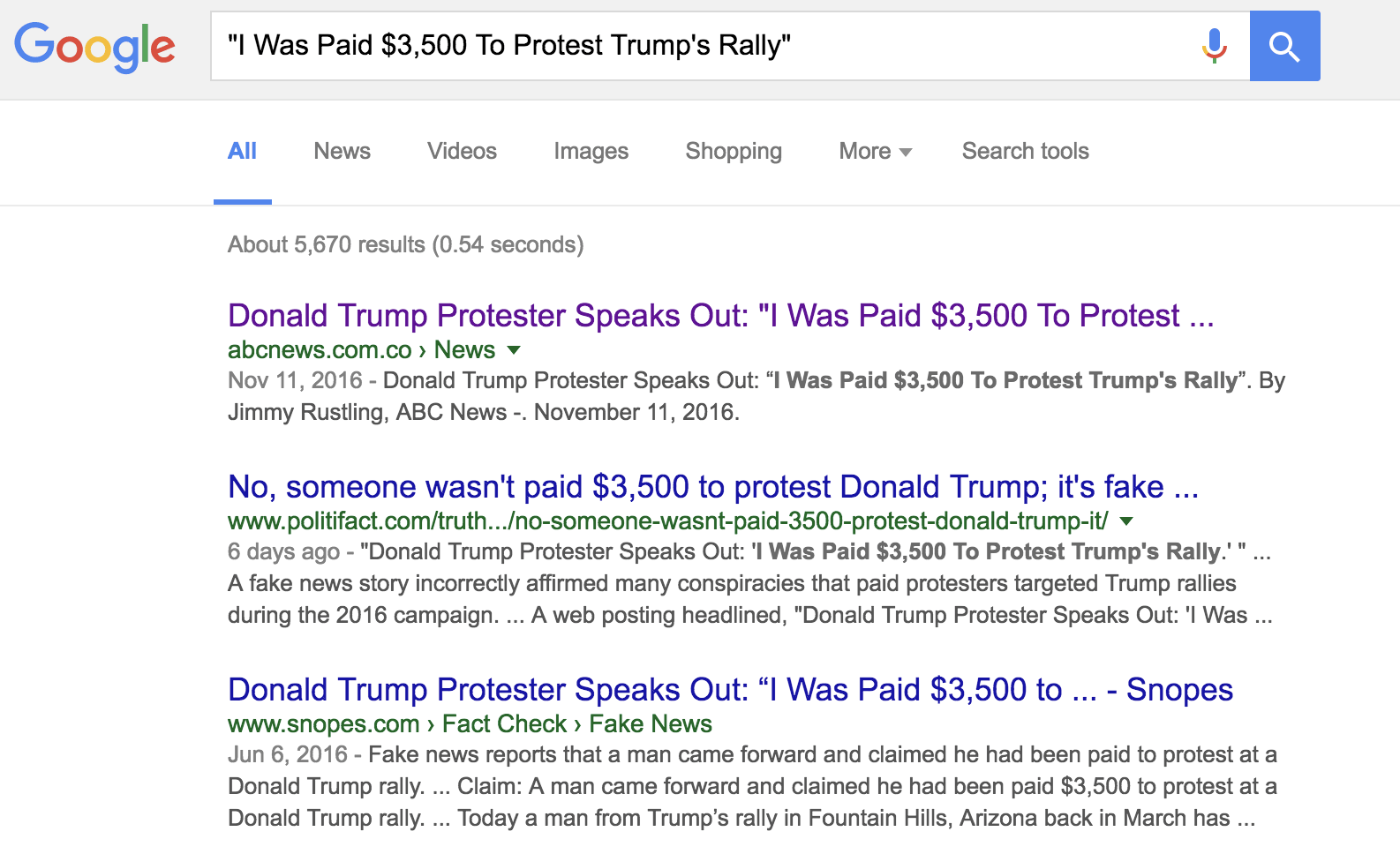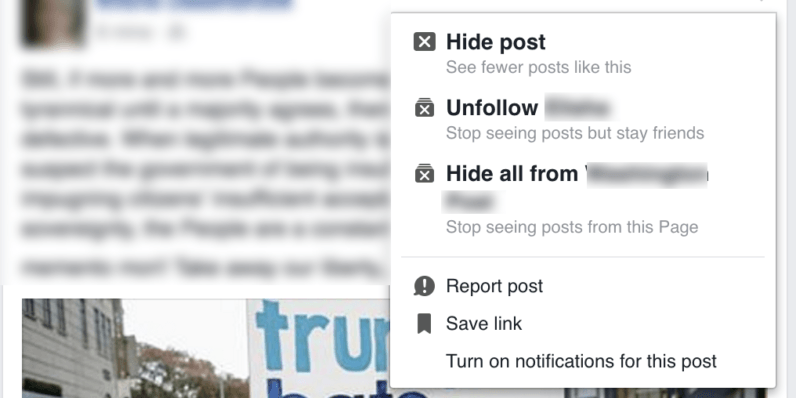As rumblings of a fake news problem turned into chatter, and then a crescendo, Mark Zuckerberg backed away slowly, insisting the company he founded, Facebook, didn’t have a problem.
Of all the content on Facebook, more than 99% of what people see is authentic. Only a very small amount is fake news and hoaxes. The hoaxes that do exist are not limited to one partisan view, or even to politics. Overall, this makes it extremely unlikely hoaxes changed the outcome of this election in one direction or the other.
He obviously has better, or smarter, friends than I do.
As we continue down this rabbit hole of finger pointing and vocal outrage, it’s clear Facebook is going to do no more than is necessary to appease the growing chorus of discontent. It’s Facebook, after all, that waged war on fake news at this time last year. I don’t think I need to tell you how that battle is playing out.
So friends, it’s time to do your part. Fake news is a real problem, and for all you can say about Facebook — we’re not free of blame. Media organizations, legitimate or otherwise, pander to an audience. If the audience responds to the content they produce, they keep producing it. If not, it’s back to the drawing board to find another approach.
As an aside, this is where you, the reader, are more powerful than you realize. You hold the keys to the content your favorite site produces. If you like it, vote. Online, this is done by shares, ‘Likes,’ and commenting your appreciation. If you don’t like it, ignore it and move on. The media — Fox, CNN, The New York Times, or even The Next Web — has to appease an audience if it wants to keep it. You hold the keys.
Now, back to that fake news stuff. The stuff that isn’t a problem, yet is totally a problem. Here’s how to combat the fake news stories popping up on your timeline, and how to keep from seeing them again once they inevitably do.
Check the domain

The domain is always the first point of reference. No matter how juicy the headline, it’s the domain that tells you what you need to know about the site that produced the content. Obvious fakes — like TrumpInsurrection.com — are easy to spot, while others — like CivicTribune.com — seem more legitimate.
Melissa Zimdars, associate professor of communications at Merrimack College created a list containing known fake news sources. It’s now offline as Zimdars updates it with hundreds of user-submitted fake news sources and transfers the database to a more permanent home. She promises it’ll be back soon. In the mean time, try Fake News Watch.
An additional trick that’s been gaining popularity over the past several years is to piggyback off the authority of a trusted news brand. Sites like ABCnews.com.co and MSNBC.co use the perceived authority of ABC and MSNBC, but append the domains — or register them somewhere else entirely. In this case, the domains come from Colombia, and use the ‘.co’ extension — a seemingly-trivial, but very important distinction.
The real news sites, in both cases, use a ‘.com’ domain.
Worse, clicking the link takes you to a site that shares the same look and feel as the legitimate version. Don’t be fooled though, this isn’t what you’re looking for.
Beware of juicy headlines

Capitalization in random places throughout a headline is a dead giveaway, as is something that seems so outlandish that, well, it probably is. Legitimate news sources don’t capitalize entire words within a headline for emphasis. Aside from the occasional use of ‘BREAKING’ to signify a significant news event, it’s just not common and should instantly raise flags.
When in doubt, read the article. This is something you should do before sharing anyway, but I’m a realist and I know full well you aren’t going to do that. If you have doubts as to a headlines legitimacy though, it’s worth going to the site and looking for other things that seem off:
- Bad grammar/spelling
- Other hard-to-believe headlines
- Attempts to sell you things with pop-ups
- Unattributed articles
The last is a major giveaway. All major news organizations provide a byline to credit the writer. If it’s lacking a byline, it should provide pause. Writers are a braggadocios bunch, and we like to be credited for our work — if it’s real.
Cross-reference the claims

A recent scam headline read:
Donald Trump Protestor Speaks Out: “I Was Paid $3,500 To Protest Trump’s Rally”
A simple copy/paste of the headline shows the story wasn’t picked up by any other major media outlet. A claim that big would have been jumped on by most of the major players in media, yet days later… nothing.
Another indication it was a scam came from the number two and three results came from Politifact and Snopes, respectively — two great fact-checking sites.
Fact check everything
Websites like Snopes, Politifact, and Factcheck do the job nicely. Both operate under the same guiding principles of educating the public when it comes to present and past internet hoaxes and news stories. Both deserve a medal; seriously.
You can often just copy/paste a headline into Google to get the information you need. If that doesn’t work, both sites have search features, but they might require some work on your part to dig up the proper result.
How to end your fake news nightmare
The easiest step is to unfollow people posting fake news. I get it though, this isn’t always practical since we all have that one aunt that’s convinced politicians are lizard people — a theory which hasn’t been conclusively disproven, by the way.
So, we make due. Luckily, Facebook has a feature that actually can help fight the spread of fake news, if we’d actually use it. It’s called ‘Hide posts’ and you can use it a couple of ways. It’s an on-going battle, I won’t lie. If you want to continue seeing status updates, without posts from particular ‘media’ organizations, however, it’s the only way.

To hide the post, you simply click the down arrow in the top right of the status box. From there, select either Hide post — which uses algorithmic magic to try to show you fewer of the same types of posts — or Hide all posts from X (‘X’ being the source of the content). If you choose the latter, you’ll no longer see any post from that Page, no matter who shares it.
Aside from that, it’s really a matter of education. It’s on you, the fact-seeking Facebook user to let others know when they’re posting garbage from a fake news site. This is typically best done with proof (links to the contrary) and a lack of finger pointing and name calling. If it’s your best friend, all bets are off; call him an idiot and move on.
Or, there’s always the trusty old standby of unfollowing someone.
Get the TNW newsletter
Get the most important tech news in your inbox each week.

